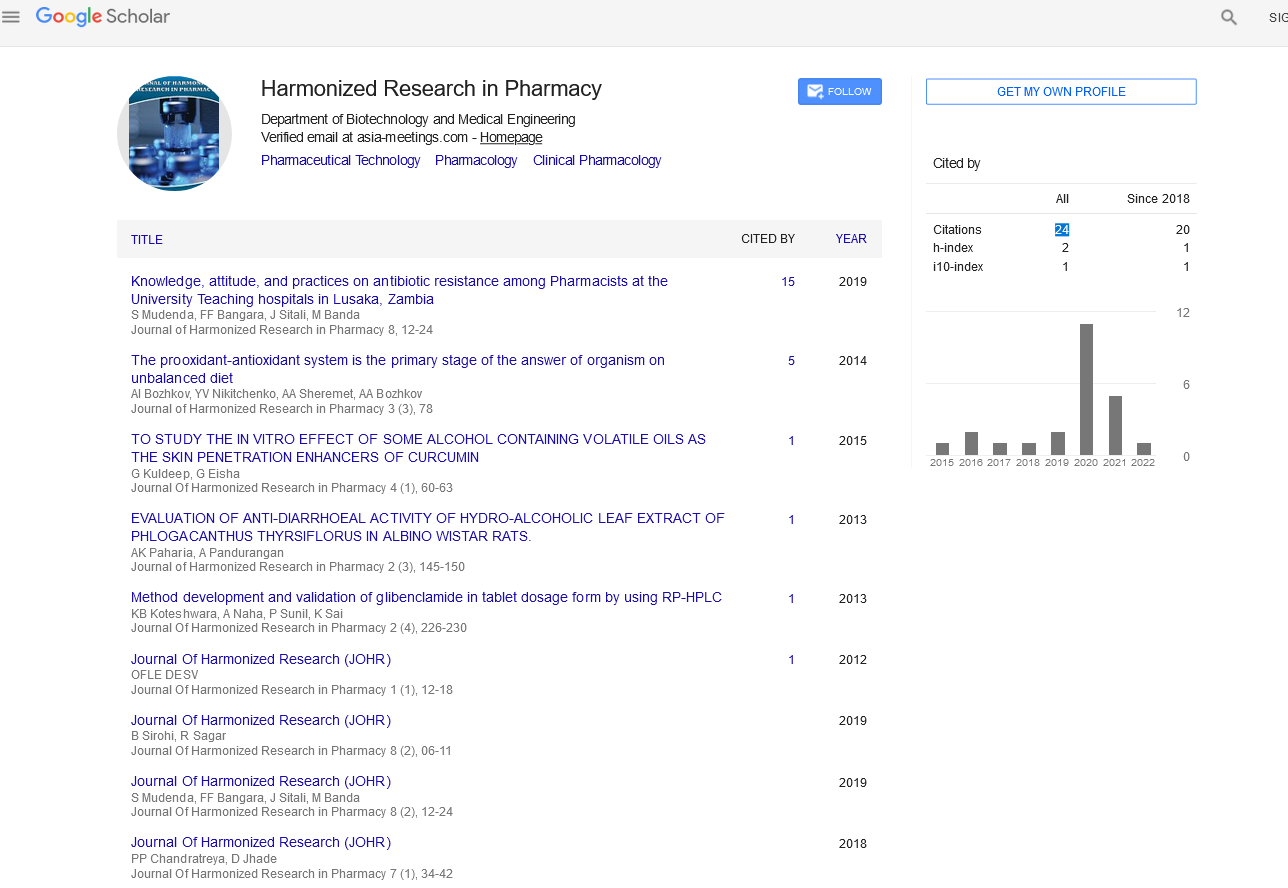PHYSICOCHEMICAL PROPERTIES OF NAPROXEN SODIUM IN DIFFERENT SOLVENT SYSTEMS AT DIFFERENT TEMPERATURES
Abstract
Author(s): Arun B. Nikumbha, Ganesh K. Kulkarnia, Meenakshi V. Rathib and Ravindra C. Bhujbalc
The study of the volumetric behavior of pain killers as electrolytes in solution provides information useful to elucidate ion–ion, ion–solvent, and solvent–solvent interactions. Apparent molar volume s (?v) and viscosity B-coefficients for naproxen sodium solutions in NS (Normal Saline), DNS (NS with dextrose), RL (Ringer lactate) and pure water system have been determined from density (?) and viscosity (?) measurements at 298.15 to 313.15 K using a pycnometer and Ubbelohde viscometer respectively. Various concentrations of naproxen sodium solutions ranging from 0.0060 to 0.0199 M were prepared. The apparent molar volumes were calculated from the density data. In addition, the concentration dependence of the apparent molar volumes was examined using Masson’s equation. The Jones-Dole equation was used to analyze viscosity data to obtain viscosity ‘A’ and ‘B’ coefficients. The concentration dependence of the apparent and partial molar volumes can be used to study ion–ion interactions, whereas the partial molar volumes at infinite dilution provide information on ion–solvent interactions. Keywords: Naproxen sodium, density, viscosity, B-coefficient.

Google Scholar citation report
Citations : 147
Journal of Harmonized Research in Pharmacy received 147 citations as per google scholar report









